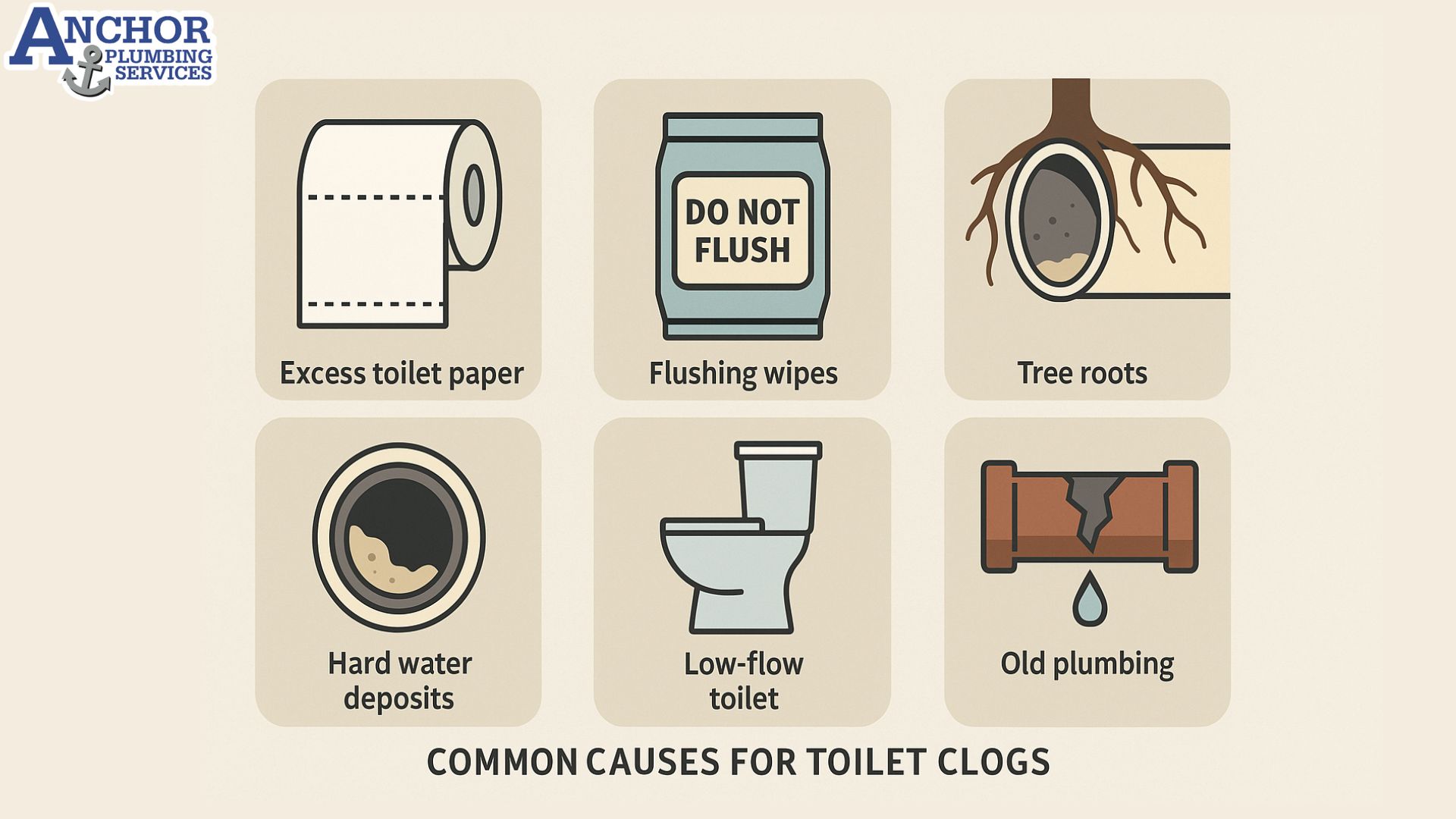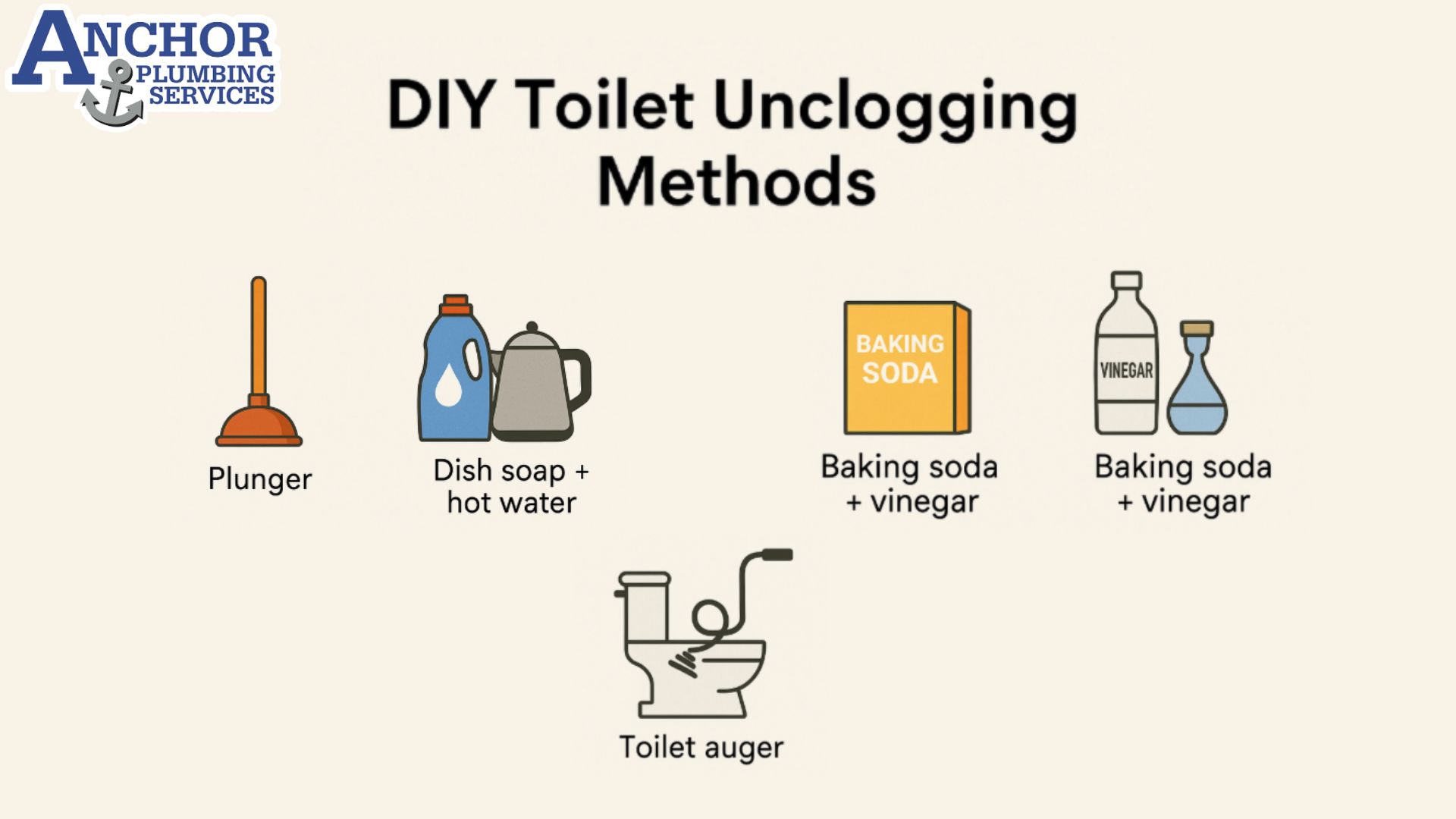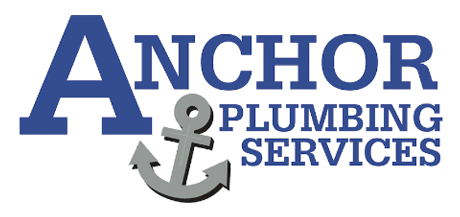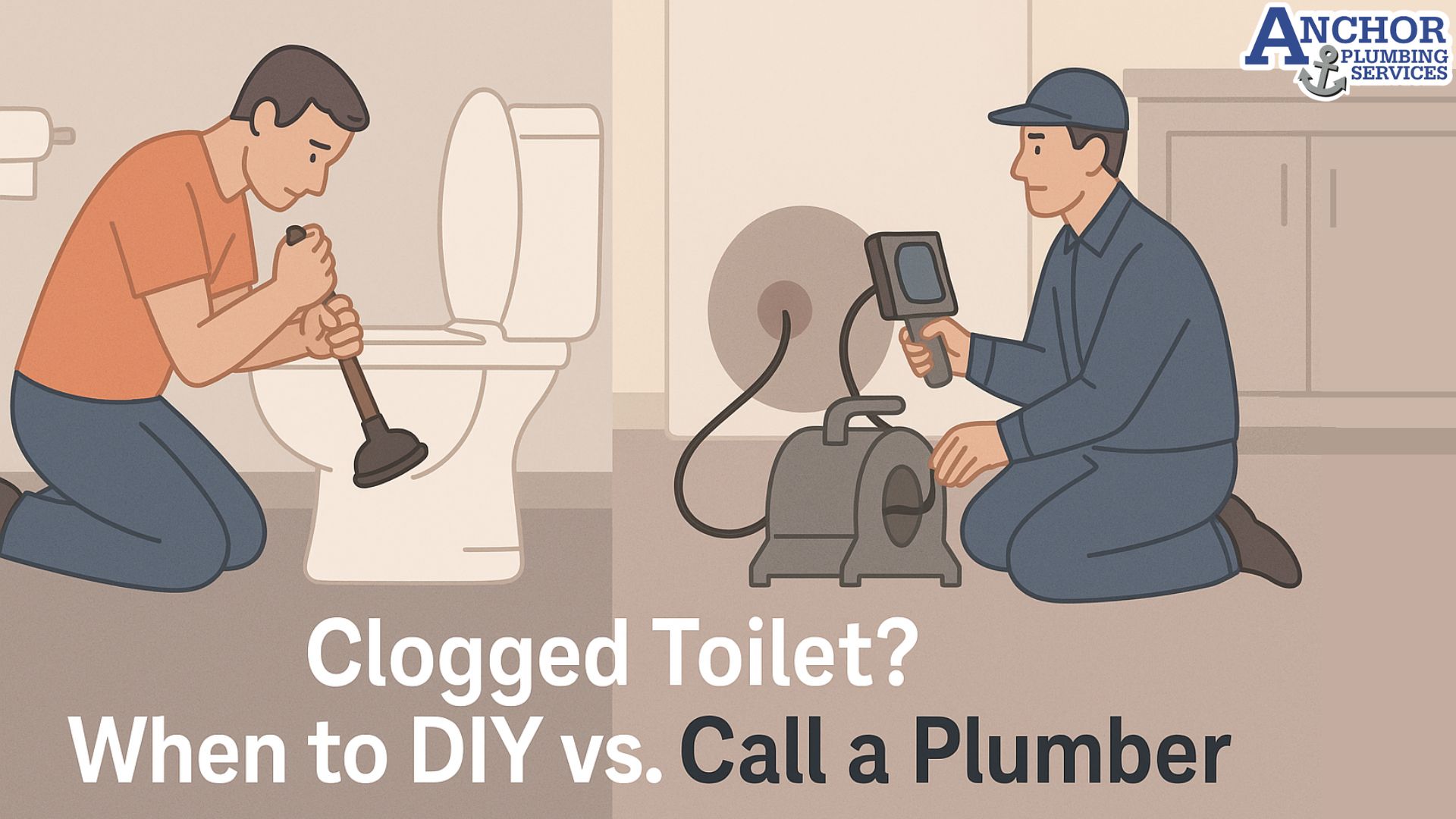A toilet clog clears when water and waste move past the toilet trap without resistance. The fastest way to unclog a toilet is to plunge with a tight seal, use hot water and soap to loosen buildup, or run a toilet auger into the trap to break the blockage. These methods restore normal flow in most homes.
Clogs form when excess toilet paper, wipes, buildup inside the trap, or deeper sewer restrictions reduce flow. This guide shows you how to unclog a toilet safely, how to diagnose the blockage, and when to call a licensed plumber for professional tools and deeper line clearing.
How to Unclog a Toilet?
Unclog a toilet by plunging with a flange plunger to create pressure and release the blockage. If that fails, add ½ cup of dish soap and 1 gallon of hot water, then wait 15–20 minutes. Use a toilet auger to break up deep clogs if the bowl remains backed up.
Start by placing the plunger firmly over the hole to create a tight seal. Apply a gentle initial push to expel air, then use forceful up-and-down motions to generate suction. Repeat for 15 to 20 seconds, then check if the water drains. If it does not, try again or escalate to other methods.
If plunging fails, pour hot water and dish soap into the bowl. Let it sit for 10 to 15 minutes to soften buildup before trying the plunger again. Baking soda and vinegar can also help create a mild reaction that may loosen organic clogs.
For deeper or stubborn blockages, use a toilet auger to reach further down the drain line. Insert the flexible cable slowly, rotate to break through the clog, and pull it back carefully. Always avoid flushing repeatedly while the toilet is still clogged, as this can cause overflow.
What Causes Toilet Clogs?

Toilet clogs are caused by flushing non-flushable items, using excessive toilet paper, low-flow toilets with weak pressure, or blocked plumbing vents. Tree roots, hard water buildup, and pipe misalignment can also contribute. Prevent clogs by flushing only waste and toilet paper and scheduling regular inspections.
Excessive Toilet Paper Buildup:
Using more toilet paper than necessary can quickly block the toilet trap and restrict water flow. Even tissue labeled as “flushable” can clump together and cause clogs over time.
Flushing Non-Flushable Items:
Common items like wipes, paper towels, feminine hygiene products, or small toys can easily create obstructions. These materials do not break down like toilet paper, which causes them to get stuck in the drain or sewer line.
Sewer Line Obstructions:
Sometimes the problem extends beyond the toilet itself. Roots from nearby trees, debris buildup, or damaged pipes in your sewer line can cause recurring clogs and slower drainage.
Hard Water Mineral Buildup:
In homes with hard water, mineral deposits accumulate inside pipes over time. This reduces the pipe’s diameter, making it easier for blockages to form even with normal toilet use.
Low-Flow Toilet Inefficiency:
Older low-flow toilet models often lack the flushing power needed to clear waste effectively. As a result, clogs occur more frequently in these systems, especially when combined with other factors like paper buildup or sewer restrictions.
Toilet clogs often happen when flushing habits, plumbing issues, and water conditions combine. Older toilets are more prone to frequent blockages, while modern high-efficiency models can handle waste better but still fail if misused.
DIY Methods to Unclog a Toilet

Unclogging a toilet can often be handled at home with a few simple techniques before calling a plumber. Start with basic methods and progress to more advanced tools if the blockage persists. Each method below explains what to do, why it works, and when to move to the next step.
Use a Plunger (Standard Fix)
You can clear most clogs using a high-quality flange plunger. Place the plunger over the drain opening, ensuring a tight seal. Start with a gentle first push to avoid splashing contaminated water, then create a firm up-and-down motion to generate suction. After several pushes, remove the plunger to see if the water drains properly. Repeat if needed.
Hot Water + Dish Soap Method
If plunging fails, try loosening the blockage naturally. Pour half a cup of dish soap into the toilet bowl, followed by one gallon of hot (not boiling) water. Allow the mixture to sit for 15 to 20 minutes. The soap lubricates the pipes while the hot water helps break down buildup, making it easier for the clog to pass.
Baking Soda and Vinegar Reaction
For minor blockages, this method uses a safe chemical reaction to dislodge buildup. Pour one cup of baking soda into the bowl, followed by one cup of vinegar. Let the mixture fizz for about 30 minutes before flushing with hot water. Avoid using this method if you have already used chemical drain cleaners, as combining products may release harmful fumes.
Toilet Auger (Plumbing Snake)
When deeper clogs remain, a toilet auger can reach beyond the trap to break up or hook debris. Insert the auger tip into the bowl and slowly rotate the handle, extending it into the drain. Once resistance is felt, crank gently to dislodge the blockage. Be cautious to avoid scratching the porcelain surface. This tool works best when standard plunging and household solutions fail.
Warning Signs You Should Call a Plumber
While DIY fixes can handle many clogs, some situations require professional intervention. Watch for these signs to avoid worsening the problem:
- Frequent clogs: May indicate a partial sewer line blockage that DIY methods cannot resolve.
- Water backing up into other drains: Suggests a deeper obstruction affecting multiple fixtures.
- Unpleasant odors: Could mean a hidden leak or trapped sewer gas requiring inspection.
- Repeated toilet overflows: Signals a stubborn or severe blockage that needs professional tools.
- Gurgling sounds in sinks or showers: Often linked to a main sewer line issue.
Persistent clogs may indicate a bigger problem within the plumbing system. Backflow from other drains often signals an obstruction beyond the toilet, which a licensed plumber can diagnose and repair safely.
How Plumbers Professionally Fix Stubborn Toilet Clogs
Licensed plumbers use advanced tools and techniques to resolve toilet clogs that DIY methods cannot handle. These solutions target deeper blockages, restore proper flow, and prevent long-term damage.
Hydro-Jetting for Severe Blockages:
Hydro-jetting uses high-pressure water streams to clear buildup, grease, and obstructions from inside the pipes. This method is highly effective for stubborn clogs and is safer for the plumbing system compared to harsh chemicals.
Camera Inspection for Accurate Diagnosis:
Plumbers often use pipe scope cameras to pinpoint the exact cause and location of the clog. This allows for targeted repairs while avoiding unnecessary digging or dismantling.
Power Augers and Professional Sewer Snakes
For deep clogs beyond the toilet trap, plumbers use motorized augers designed to break through dense blockages. These tools reach much farther than standard DIY snakes and minimize the risk of pipe damage.
Same-Day Removal for Emergency Backups
Professional plumbers can provide same-day solutions for severe or recurring clogs. With specialized equipment, they quickly diagnose and resolve complex blockages to restore normal toilet function.
Preventing Future Toilet Clogs
You can reduce future clogs by adopting simple habits and regular maintenance practices. Preventive steps help protect your plumbing system and avoid costly repairs.
- Be Mindful of What You Flush: Avoid flushing wipes, hygiene products, grease, and other non-flushable items, even if they are labeled “septic-safe.” Stick to toilet paper only to reduce the risk of blockages.
- Use Less Toilet Paper: Excessive toilet paper is one of the most common causes of clogs. Using smaller amounts and flushing more frequently can keep the trap and drain line clear.
- Upgrade to a High-Pressure Flush Toilet: Older low-flow toilets often fail to push waste effectively, leading to frequent blockages. Installing a modern high-efficiency model can reduce recurring issues.
- Schedule Routine Drain Maintenance: Professional drain cleaning once or twice a year can help remove buildup before it turns into a clog. Regular maintenance ensures the toilet and sewer lines remain in top condition.
Frequently Asked Questions
Can I use Drano in my toilet?
It’s not recommended because chemical drain cleaners like Drano can damage your toilet’s pipes, rubber seals, and internal components. Instead, use safer DIY methods or call a professional for persistent clogs.
How long should I plunge before calling a plumber?
If plunging does not clear the blockage within 10 to 15 minutes, it may indicate a deeper clog in the drain or sewer line. At this point, it is best to contact a licensed plumber.
Why does my toilet clog repeatedly?
Frequent toilet clogs often suggest a more serious issue, such as buildup inside the sewer line, improper flushing habits, or underlying plumbing problems. A professional inspection can help identify and resolve the root cause.
Conclusion
Clogged toilets are frustrating, but the right approach can save you time, stress, and unnecessary repairs. While DIY fixes like plunging, dish soap, or a toilet auger can handle minor clogs, persistent or recurring issues require professional attention to avoid further damage.
If your toilet clogs won’t budge or you notice frequent backups, Anchor Plumbing Services is here to help. Our licensed technicians use advanced tools, including camera inspections and powerful Hydro Jetting Services to clear even the toughest blockages—restoring your plumbing quickly and reliably.


